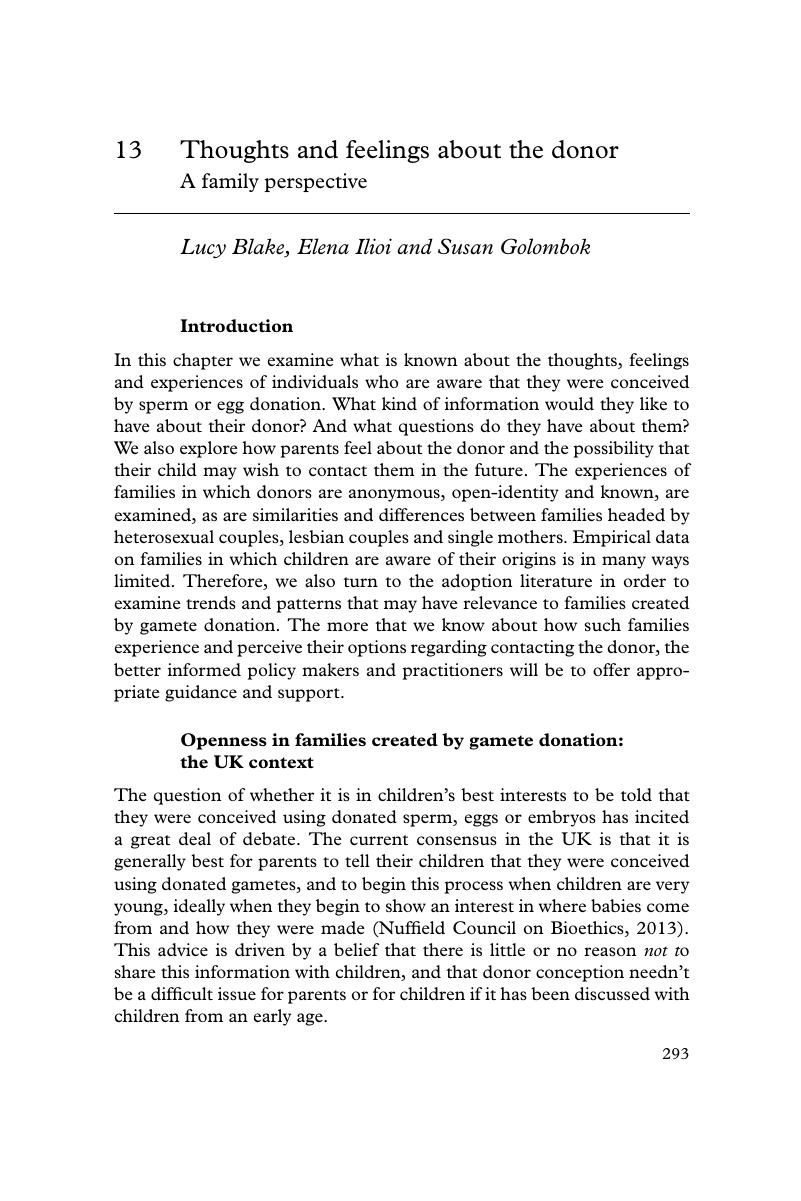Book contents
- Regulating Reproductive Donation
- Regulating Reproductive Donation
- Copyright page
- Contents
- Editors, contributors and discussants
- Book part
- Introduction
- 1 The development of governance and regulation of donor conception in the UK
- Part I International, cross-border and global issues
- Part II How many children per donor?
- Part III Donors
- Part IV Information about donors
- 13 Thoughts and feelings about the donor
- 14 ‘Choosing’ a donor
- 15 Regulating the provision of donor information to donor-conceived children
- 16 The informational needs of prospective parents
- Index
- References
13 - Thoughts and feelings about the donor
A family perspective
from Part IV - Information about donors
Published online by Cambridge University Press: 05 March 2016
- Regulating Reproductive Donation
- Regulating Reproductive Donation
- Copyright page
- Contents
- Editors, contributors and discussants
- Book part
- Introduction
- 1 The development of governance and regulation of donor conception in the UK
- Part I International, cross-border and global issues
- Part II How many children per donor?
- Part III Donors
- Part IV Information about donors
- 13 Thoughts and feelings about the donor
- 14 ‘Choosing’ a donor
- 15 Regulating the provision of donor information to donor-conceived children
- 16 The informational needs of prospective parents
- Index
- References
Summary

- Type
- Chapter
- Information
- Regulating Reproductive Donation , pp. 293 - 310Publisher: Cambridge University PressPrint publication year: 2016
References
References
UK legislation
- 1
- Cited by



